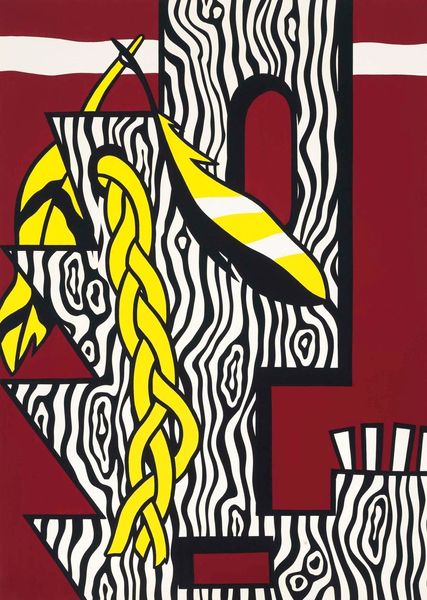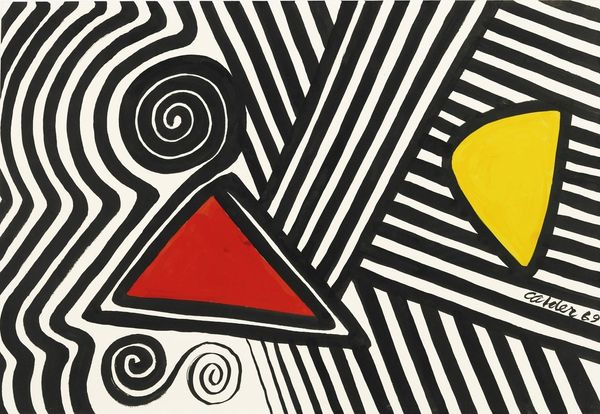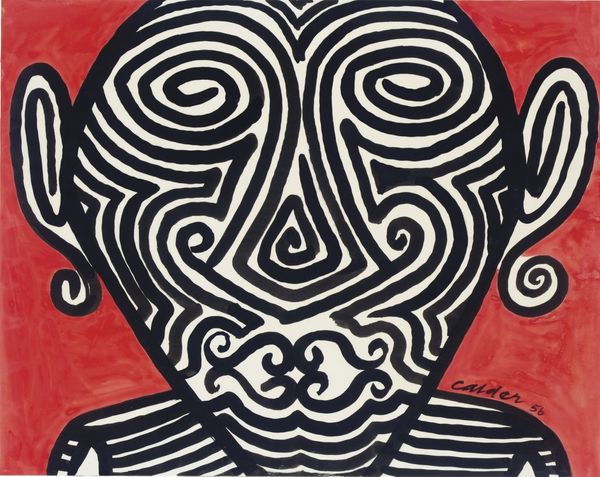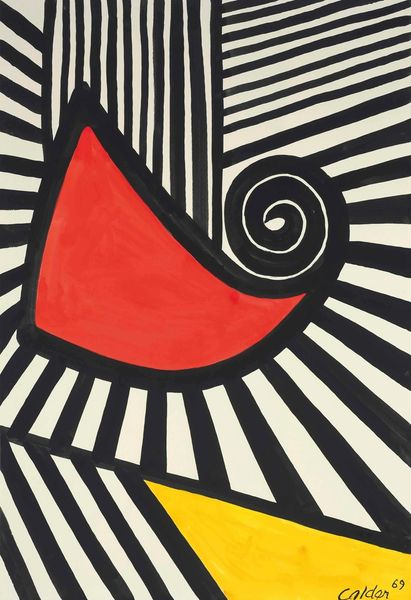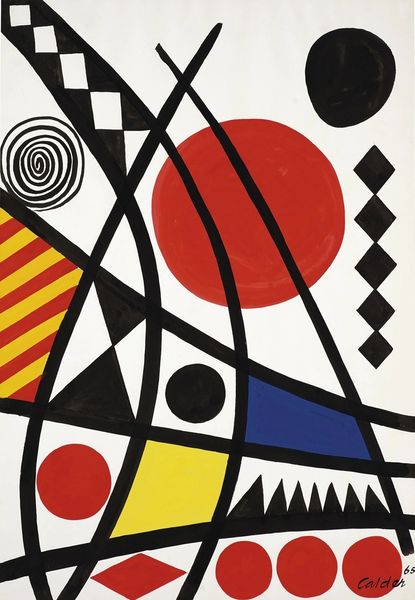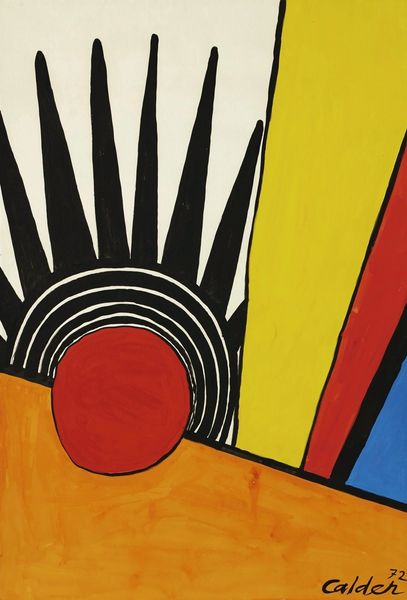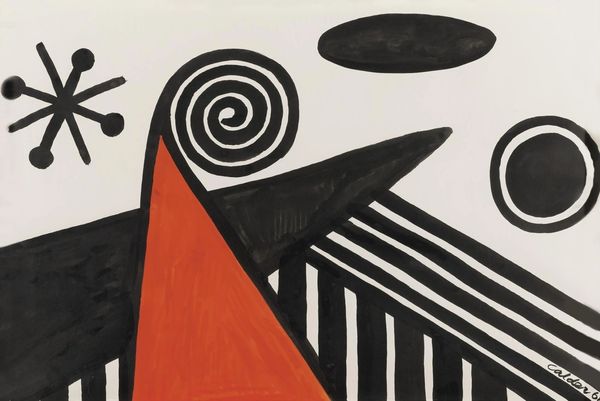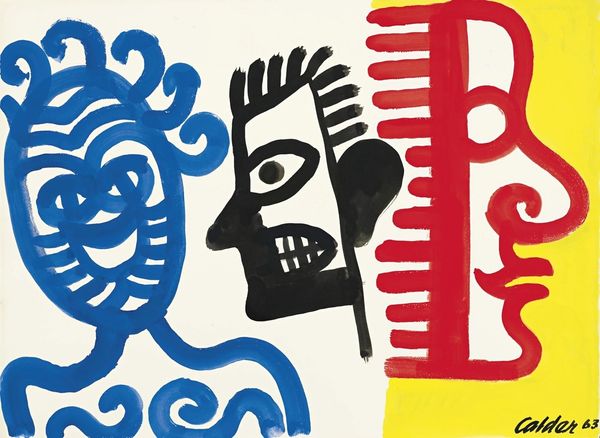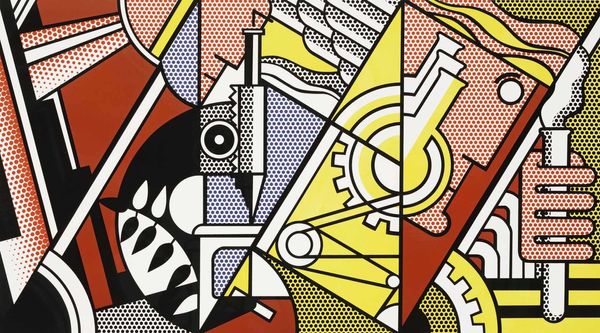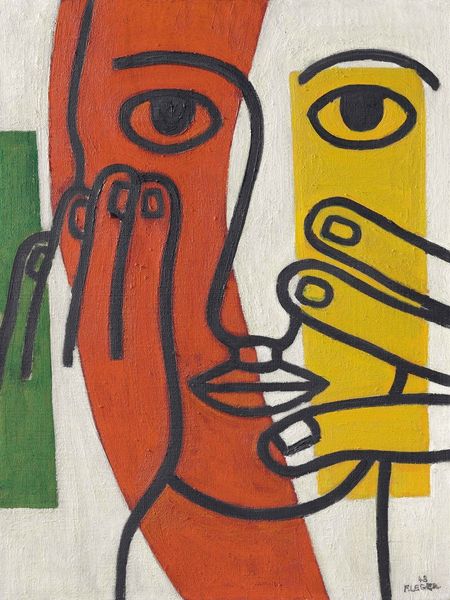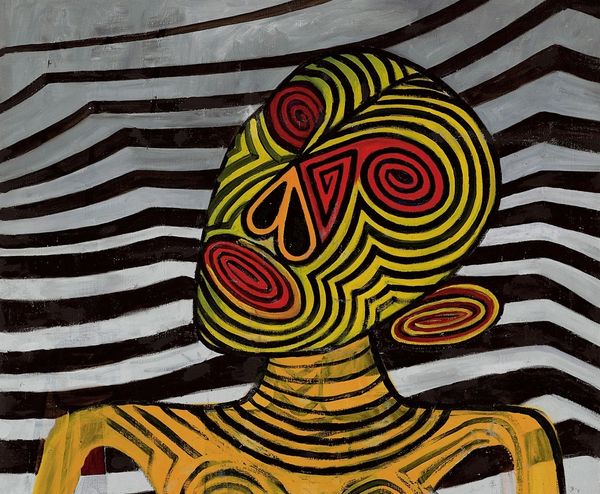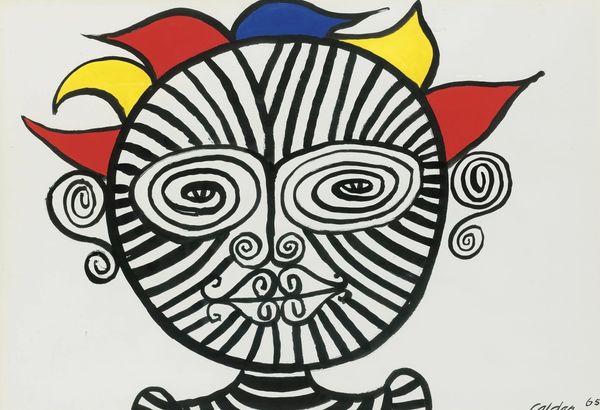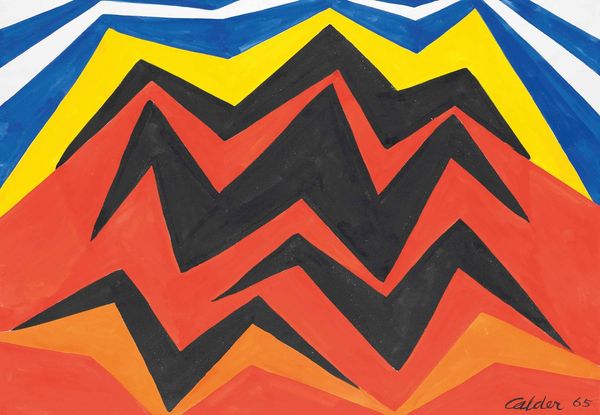
Copyright: Modern Artists: Artvee
Editor: Here we have Roy Lichtenstein’s "Blue Head," created in 1979 using acrylic paint. It strikes me immediately how stark the composition is. What compositional elements stand out to you? Curator: The division of the pictorial plane into distinct, flat color fields immediately arrests the gaze. Observe how Lichtenstein segments the face itself, reducing it to geometric forms defined by black outlines. Notice the calculated use of Ben-Day dots, deployed to simulate the texture of commercial printing, playing with concepts of simulacra and representation. The blue and white stripes on the face disrupt any sense of realistic depiction. Do you perceive a tension arising from these contrasts? Editor: Yes, I see the tension between the graphic quality and the implied volume through the shading. The yellow and red zigzags in the background are really active too. How does that dynamism contribute to the overall effect? Curator: The vibrant yellow and red background amplifies the artificiality, underscoring that we are not viewing a naturalistic rendering, but a carefully constructed image. These stark juxtapositions prompt inquiry into the very nature of representation. Note how the black outline is used not only to define the limits of objects and forms but is also used in blocks of colour within the plane of the composition. Can this, then, also be considered a portrait in colour, line and contrast alone? Editor: That's a fascinating observation, thank you. It really changes how I understand the subject of the piece, considering it as forms in an environment that creates meaning. Curator: Indeed. Considering formalistic structure, the symbolic elements become less important than how those aspects contribute to the total sensory and cognitive experience. We understand form and feeling here.
Comments
No comments
Be the first to comment and join the conversation on the ultimate creative platform.
